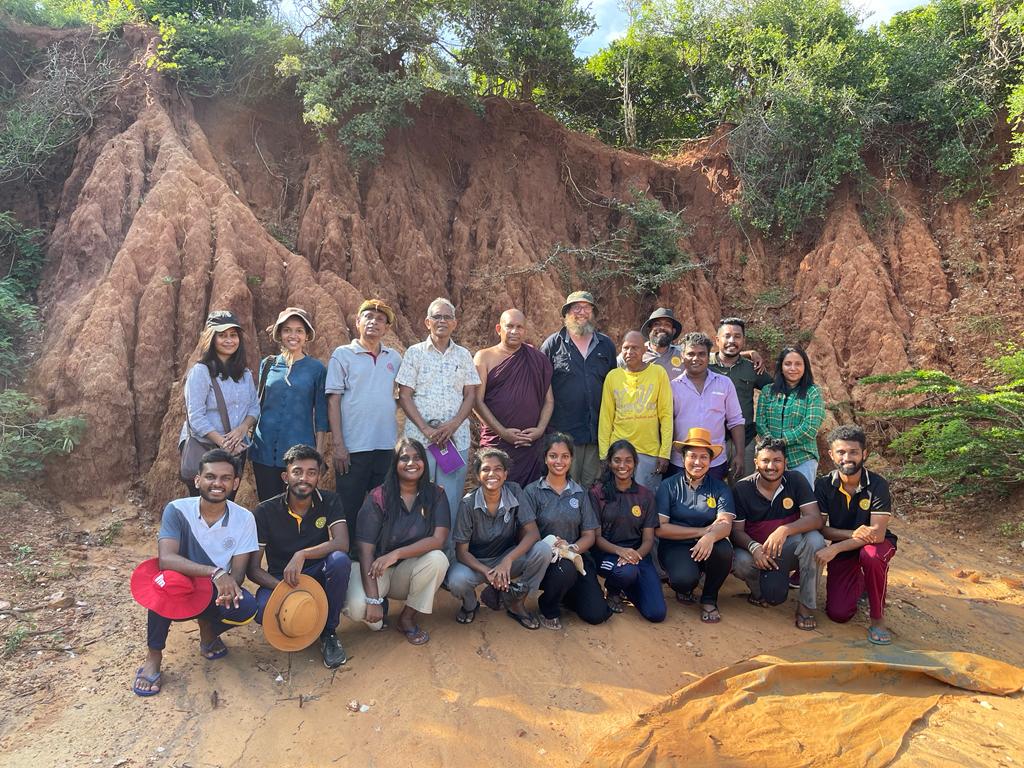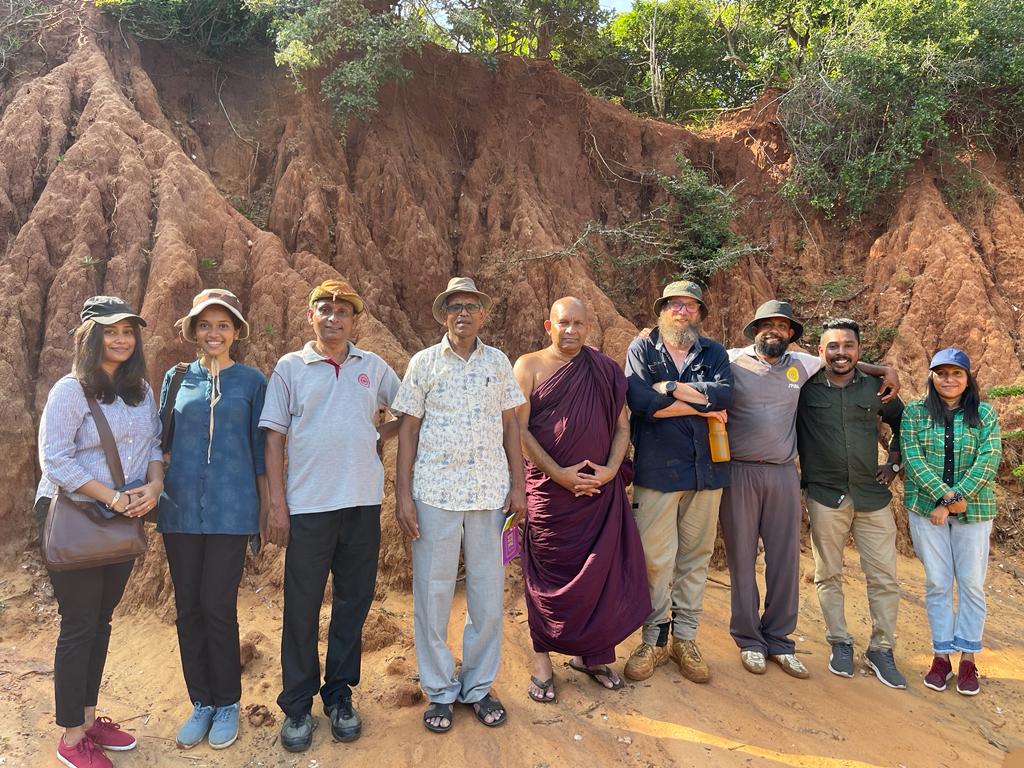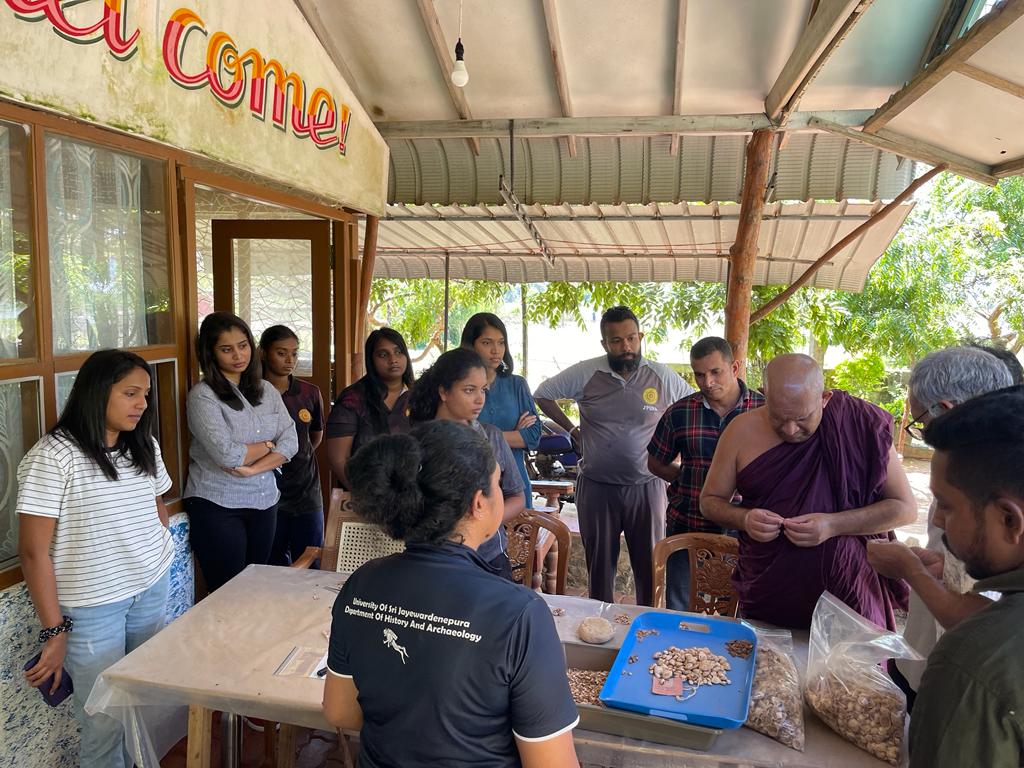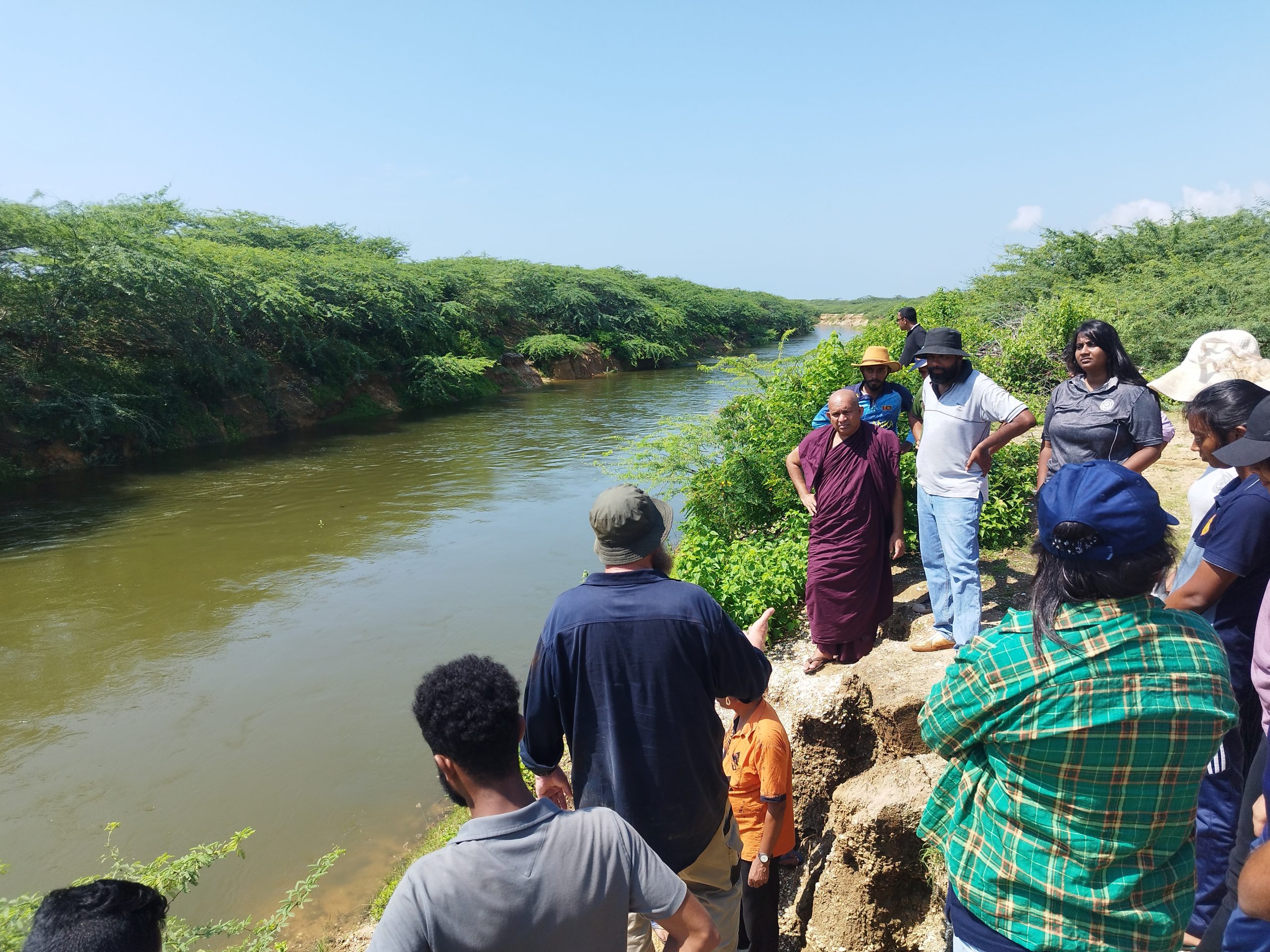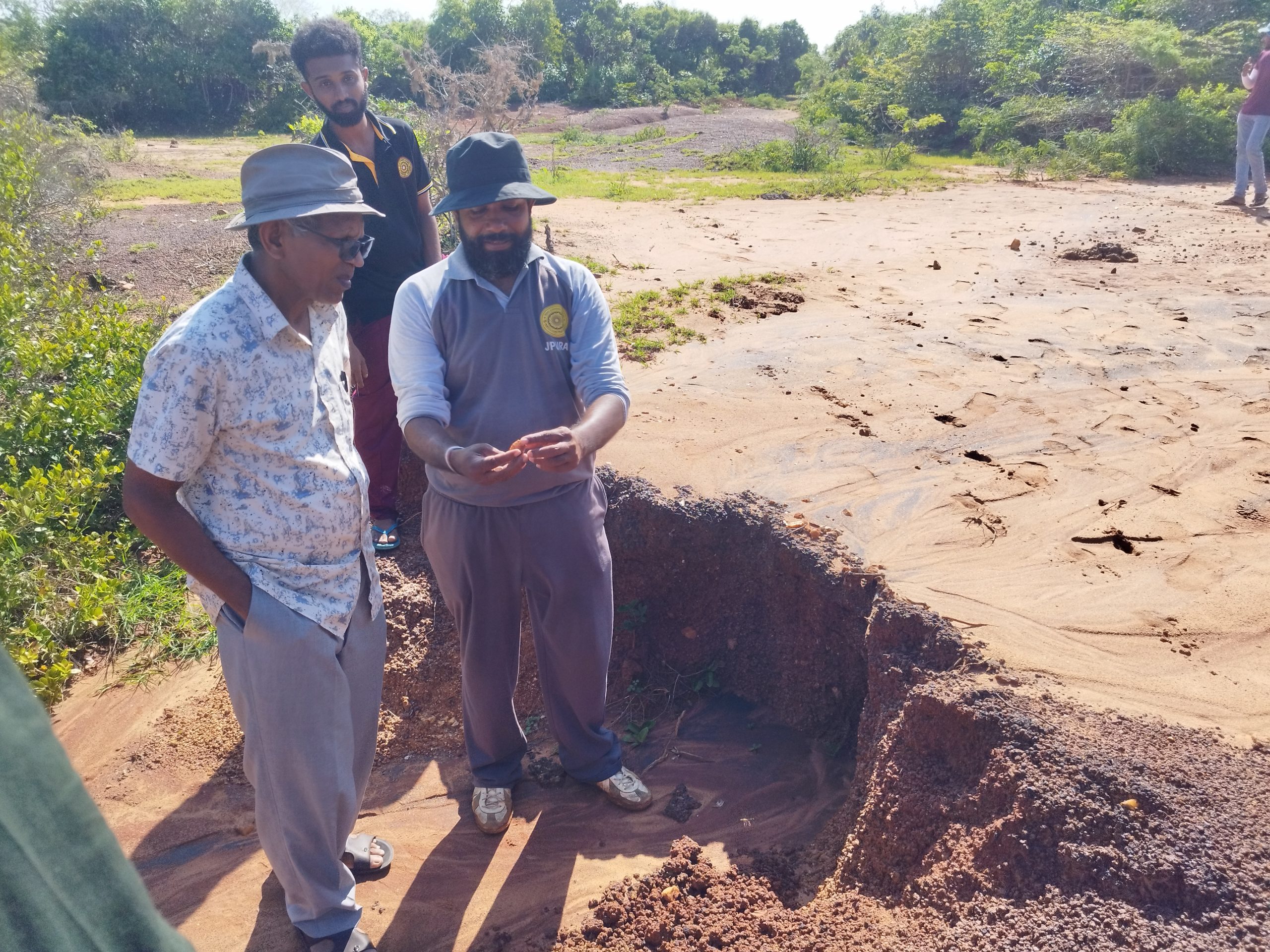The prehistoric context of the southern coast of Sri Lanka was first explored during the colonial period and it was revisited by Dr. Siran Deraniyagala in the 1970s’. His research excavation at ‘Bundala-Pathirajawela’ indicated that the site dated to nearly 125,000BP (Middle-Paleolithic period). In 2019, under the directorship of Dr. Deraniyagala, Sen. Lect. (Dr.) Oshan Wedage of the Department of History and Archaeology further excavated this site, and Associate Prof. Patrick Faulkner from the University of Sydney, Australia, was invited to analyze the discovered shells. During his multiple visits to Sri Lanka since 2019, numerous interesting observations and information could be revealed through analysis.
However, it is an ongoing debate among Sri Lankan scholars whether these shell beds on the southern coast are natural or cultural deposits. Therefore, in order to address this ongoing debate, the research team looked for potential research locations (suitable shell deposits) to conduct a comparative study with the Pathirajawela shell beds. Based on this requirement, the research team conducted an archaeological exploration within the Bundala National Park from 16th of January – 4th of February 2023.
Based on its results, the research team conducted Archaeological excavations at the following locations having undisturbed shell beds from 28th of August – 30th of October 2023, and obtained samples for OSL dating and other analyses as well. • Bundala Thunman-handiya • Bundala Hemagodana • Canal Bank Section • Bundala Pathirajawela Section
This research excavation project provided an opportunity for 2nd, 3rd and 4th year Archaeology undergraduate students to acquire practical experience of an archaeological excavation and shell sorting with foreign experts. Funding for this entire project is provided by the Australian Research Council and the University of Sydney as a research grant, received by Associate Prof. Patrick Faulkner. The Department of Archaeology of Sri Lanka and the Department of Wildlife Conservation of Sri Lanka also collaborated in this research excavation.

